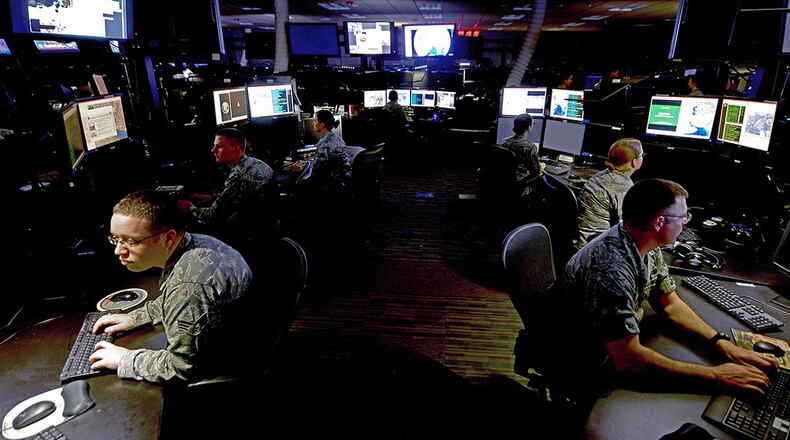“Operational analysts have so much data to look at, and it’s coming at them fast and furious,” said Dr. Chris Jacobson, solutions architect and product owner from ACC. “We wanted to see if we could use RTA to help with that overwhelming amount of data streaming at the analysts.”
RTA is an open, modular IT platform that acts as a harness to host AI and ML algorithms. Users identified full motion video, or FMV, as an initial area where they thought this could provide benefits.
Noel Wrye, senior program manager for RTA in the Digital Directorate, and also a former analyst himself, could see how this would work.
“On any given day an ISR analyst for DCGS is virtually drowning in massive amounts of data – from websites, sources, feeds – and they are often also being multi-tasked, asked to prove mission data, intelligence for that data, and to give briefings to commanders and all levels of personnel,” he said. “We wanted to relieve that data burden by automating some of the processes for viewing, searching and assimilating that data by using real-time models and algorithms.”
Researchers from AFRL, led by Morgan Bishop, senior computer scientist and AI/ML lead, looked at having an enterprise solution to enable a “supply chain of algorithms.”
“As we knew one size does not fit all, we wanted to be able to support a variety of mission sets,” he said. “We are using an AI process called deep learning, where the video pipeline is ingested into models so it can process the video for specific end user needs, making the analyst more effective from the onset.”
Although organizations like AFRL had been doing research in AI and ML for years, this particular project began in 2016, with an ACC commander’s intent to bring data analytics onto both the legacy and open architecture DCGS to improve capabilities.
Using an agile development process, in August 2016, the team did a “spike,” basically a quick three-month study, to show what could be accomplished. In November 2016, they presented a sample technology set to showcase the value to the operators. Requirements were then put in place and the project was funded in March of 2017.
Using algorithms from AFRL, the team was able to create RTA version 1 to prove the concept quickly and continue to modernize the process along the way. RTA version 1.1 was installed in October 2019. Training was completed and the capability was validated in January 2020, and on Feb. 28, at the Air Force Association’s Air Warfare conference, initial operational capability was announced by Dr. Will Roper, the Air Force service acquisition executive.
“This is really the beginning of applying machine learning to free our Airmen from some of the repetitive tasks they’re asked to do,” said Steven Wert, program executive officer Digital. “Across our Air Force there are countless examples where we can apply automation and algorithms to do the tedious work that computers can do well and do much faster.”
Members of the team spoke about the agile methodology and what they see for the future.
“Using an agile mindset, and minimum viable products, we are able to rapidly deliver capability,” said Capt. Steven Hedrington, section lead, multi-intelligence ACAT from the Digital Directorate. He added that they use a continuous evaluation cycle that is “user-centric” and every three months look to see what the user has requested and see if it can be executed, and quickly. “That’s our looking-back, looking-forward agile aspect.”
While the team’s current focus is on FMV, and while they are still looking to improve that, they are also looking ahead to see what could be next, whether audio or chat and text inputs.
Bishop said AFRL is also starting AI/ML data set challenges over the summer.
“We want to bring in a large number of ‘best in breed’ vendors on a recurring basis because the technology changes so quickly,” he said. “We want to make sure our analysts are getting the best algorithms they can get. We’re doing a big push to bring in everyone from traditional DOD vendors to Silicon Valley companies to help us develop these algorithms.
Jacobson said the group has been a “good model of virtual teaming.” Even before COVID-19 challenges, this team of members who are both geographically and organizationally separated combines the “best talent” to effectively meet critical objectives.
“It’s a testament to what can be delivered through that approach,” he said.
Wrye noted, in the end, all the hard work means the analysts can create “more timely and accurate intelligence products.”
About the Author
